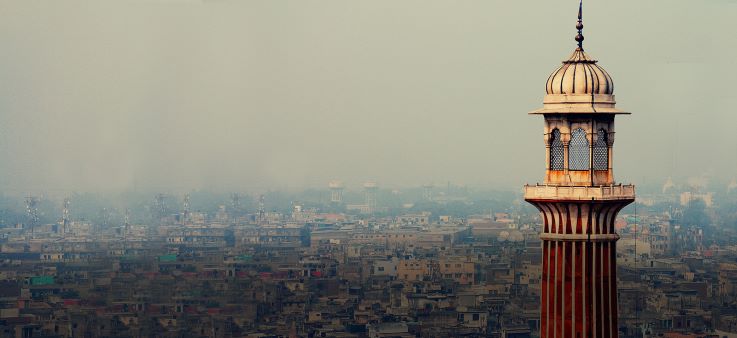Behind The Pollution Problems. Lack of Politically Feasible Solutions

On October 15, when Delhi’s Graded Response Action Plan (GRAP) was first activated, some people actually believed improvement was coming. Prepared by the Central Pollution Control Board and first implemented in Delhi-NCR in 2017, the GRAP lists measures to curb air pollution according to the severity of the situation. On October 15, with AQI levels finally crossing 300, it was time for GRAP to show its mettle. As it turned out, nothing has seemed to work, and by now we are back to the familiar position of anguish, resignation and planning for ‘next year’. In short, the 2019 battle has been lost, comprehensively. The lives that will be lost in this battle will be invisible as always, be it people brought down by persistent illnesses they had never fallen to, the higher prevalence of lung cancer among non-smokers in future years, and more. An invisibleness that will help the government continue denying the numbers of fatalities ascribed to pollution.
Clearly, till the time doctors actually start writing cause of death as pollution, no government is going to admit deaths due to pollution, till they make their way to the opposition ranks perhaps.
So just why does GRAP fail? Because it is designed to fail. For starters, it is designed and run by the government/s run entities, the very organisations that allowed the conditions that have created today’s horror scenario. With zero accountability for failure to enforce even the most basic laws, India’s pollution challenge as always going to be a tough one to crack. If any further proof was required, you only need to match promises of say, clean water in the Ganga river, where some more deadlines will pass by every six months in the foreseeable future. Shockingly, even at Varanasi, the Prime Ministers constituency, sewage treatment remains an issue, with untreated effluents flowing into the river in many places, 6 years after he first took over as the city;s MP.
Coming back to GRAP measures, these include increasing bus and metro services, hiking parking fees and stopping use of diesel gen-sets when the air quality turns “poor”. When it turns “severe”, GRAP recommends closure of brick kilns, stone crushers and hot mix plants, sprinkling of water, frequent mechanised cleaning of roads and maximising power generation from natural gas.
The measures to be followed in “emergency” situation include stopping entry of trucks in Delhi, ban on construction and introduction of the odd-even car rationing scheme. So just how many of these measures were finally implemented? The measures that were least likely to face resistance, or impose any significant financial burden on the citizenry and industries alike. There was a complete failure to communicate the intangible costs this pollution was imposing, in terms of lost productivity, higher healthcare costs and more. Just working around the direct costs of fighting pollution will never work at scale. The issue is best captured by this quote from CK Mishra, Secretary at the Ministry of Environment, Forests and Climate Change, “India is an aspirational country, on growth path. It will have an emission problem. But the right approach has to be responsible. There can’t be growth with a cost to the environment. There is a distinct possibility of striking a balance. As policy makers, our job is to define the parameters and the path where they really co-exist.” That a ministry tasked with protection primarily still has to consider ‘balance’ all the time tells a story.
Clearly, for a country like India, with a straining population trying to lift itself out of poverty, or improve their lot in life, managing these aspirations versus the need for a ‘better quality of life’ for what many consider the privileged, is a challenge. With awareness still pitiably low about the long term effects of higher pollution, much like the fatality to smoking that was seen through the 90’s, there is a definite need to find different solutions.
Like the much touted ‘green deal’ in the US, India needs to find its own way to make the fight against pollution and general environment degradation an economically productive and not a destructive process. Or we will keep seeing the ridiculous situation of say, a drop in fuel consumption in a city being lamented as a slowdown, even if that is driven by efforts like say, car pooling, better public transport, or even more flexible working practices adopted by firms.
Today, the country is committed to reducing its carbon intensity (carbon emissions per unit of GDP) to 33-35% below 2005 levels, increase renewable energy contribution to power supply to 40%, and restore 26 million hectares of degraded land. All these goals are to be achieved by 2030. Those are huge numbers, and by now, should have opened up a massive opportunity for growth in industries that can meet them. The renewables industry saw just such a spurt, but the way it has been brought to a grinding halt is a classic template of how government initiatives flounder and die even. From too much control, to reneging on commitments (Andhra Pradesh) and finally, completely confused policy initiatives have caused needless misery in a sector that should have been creating thousands of jobs every month by now. Sadly, even the ambitious plan to stop single use plastic use seems to have gone on the backburner now, thanks to the lack of planning. If progress has indeed been seen on the plastic front, it is finally because of a broader consumer side awareness. It’s the same issue with the rush for Electric Vehicles, and the equally fast backtracking when faced with industry pushback.
The same story is being repeated in the efforts to produce more biofuels , biogas, besides sustainable housing. It doesn’t have to be. Far from a slowdown, a properly planned green deal for the country has the potential to offer growth, a better quality of life, and a place in the global hall of fame, if the will is shown.




